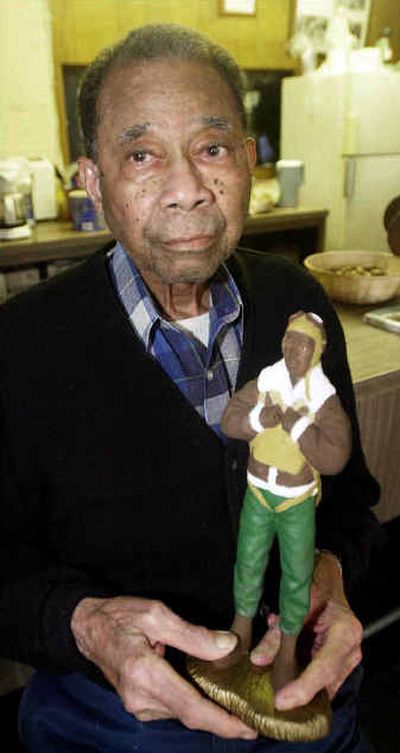In passing

Alva Temple, 87, Tuskegee Airman
Columbus, Miss. Alva Temple, one of the famed Tuskegee Airmen who became the nation’s first black military pilots, has died. He was 87.
Temple died Aug. 28 at his home. A cause of death was not released.
Temple was in the Air Force for 20 years and completed 120 missions during World War II, said Lucille Temple, his wife of nearly 60 years.
Temple trained at Tuskegee, Ala., as part of a program set up by the Pentagon during the war. The training was rigorous, with only 992 men graduating as Tuskegee Airmen.
The black pilots – known as “Red Tails” for the color of the rear of their planes — were credited with shooting down more than 100 enemy aircraft and never losing an American bomber to enemy fighters.
“We like to think that we played a part in the integration,” Temple said earlier this year. “All I can say is, things are not as bad as they used to be. New opportunities have been opened up to our blacks.”
Temple, who owned a gas station, was born Sept. 5, 1917, in rural Carrollton, Ala.
William Siri, 85, mountaineer-scientist
Berkeley, Calif. William Siri, a biophysicist at the Lawrence Berkeley National Laboratory who helped lead the first American expedition to reach Mount Everest’s summit, has died of pneumonia. He was 85.
Siri, who had Alzheimer’s disease, died Aug. 24 at his home in Berkeley, said his wife, Jean.
Among the world’s foremost scientists to conduct research while scaling mountains, Siri served as deputy leader and scientific coordinator on the expedition that put five Americans atop Everest’s 29,035-foot peak in 1963.
Born in Philadelphia on Jan. 2, 1919, Siri earned a bachelor’s degree in physics from the University of Chicago before joining the Berkeley lab. He later worked in the radiation laboratory of the Manhattan Project.
Siri also helped medical physicist John Lawrence launch the field of nuclear medicine in which radioisotopes are used to study human physiology.
Al Baldwin, 74, Gold Coast’s ‘Suntan Man’
Brisbane, Australia Al Baldwin, Australia’s “Suntan Man” who sprayed countless tourists with protective lotion on the popular Gold Coast resort strip for more than three decades, died Tuesday of lymphatic cancer, friends said. He was 74.
Baldwin was featured in many tourist promotions for the east coast region that draws visitors from around the world with its long sandy beaches, good surf and warm weather.
Using a spray machine loaded with protective cream, he gave generations of beachgoers a protective coat against Australia’s harsh sun. It was estimated he had sprayed around 3 million people since arriving on the Gold Coast in 1968.
“I’ve always just sat in the sun and loved it,” he told reporters in July, when he was given a special award for his years of service to the Gold Coast community.
Baldwin, who grew up in a New Zealand orphanage, moved to Sydney in the early 1950s where he opened a restaurant.
He moved to the Gold Coast in 1968 to manage the Broadbeach Hotel and then bought the beach hire business at Surfers Paradise – renting out equipment like chairs and loungers – and began spraying his clients with suntan lotion.
Alice Puluelo Naipo Park, 79, hula master
Hauula, Hawaii Alice Puluelo Naipo Park, a hula master who taught the Hawaiian dance for more than 50 years, died Aug. 18 at her home, relatives said. She was 79.
Park had her first hula lesson at age 3 and completed her teaching under the famous hula master Lokalia Montgomery.
In 1952, she opened Puamana Hula Studio, named after one of her eight children. She also taught Hawaiian culture to elementary school students, and her hula style was documented by the Hula Preservation Society.